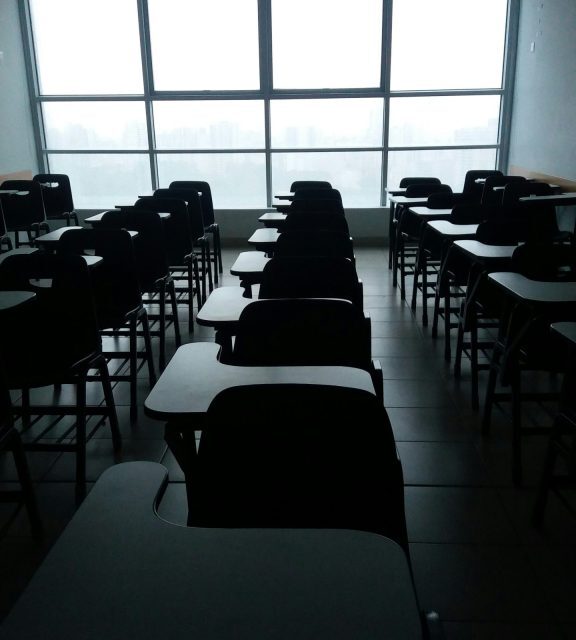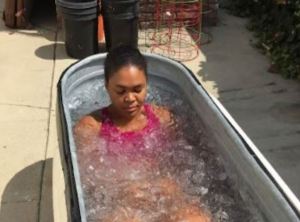By Joseph Williams
Word in Black

Working longer hours, typically in under-resourced schools, Black teachers often climb up the rougher side of the educational mountain compared with their White peers. And, like all teachers, they dealt with the COVID-19 disruptions in their profession: trying to engage and teach to camera-off students over Zoom.
But while a new survey indicates that teachers, in general, are not OK — student behavior issues, chronic absenteeism, and learning loss are pushing morale underwater — Black teachers have a better attitude than White teachers about their work.
“Black teachers report the strongest morale, while teachers who are White or of two or more races have more negative morale,” according to the first-ever Education Week 2024 Teacher Morale Index. On a scale of -100, which is a completely negative attitude, to +100, which is a completely positive outlook, overall teacher morale is -13, but Black teacher morale hovers at around +10, according to the survey.
“The teaching profession — a workforce of three million — is at an inflection point that could shape the course of the profession for the next generation of educators and students,” according to the survey report. “For the last few years, teachers have reported high levels of burnout and disillusionment—borne initially from the hardships of teaching in a pandemic and exacerbated by the escalating academic, social, and mental health needs of students.”
The survey doesn’t pinpoint why Black teachers feel more positively about their work. But some experts believe that teaching — historically held in high esteem by the Black community, and one of few professions open to Black people during the Jim Crow era — may be seen as more of a calling than just a job.
“In my opinion, Black teachers may be experiencing higher morale than their peers given the underlying purposes and motivations behind their work, but also community empowerment and racial uplift,” says Sonya Douglass, founding director of the Black Education Research Collective at Columbia University Teachers College.
“The Black freedom struggle for equal education has always been just that — a struggle,” she says. “So one could argue that challenging circumstances or environment might not have the same impact on Black teachers as their non-Black colleagues.”
Hiewet Senghor, founder of the nonprofit Black Teacher Collective, agrees, noting that Black teachers are just 7 percent of a workforce dominated by White women. But she also points out that the 10 percent positive morale of Black teachers isn’t all that high, and they likely experience the same frustrations and burnout rates as their White peers.
“A more asset-based idea would be that Black teachers oftentimes have developed skills and capacity to make a way out of no way or make a dollar out of 15 cents,” Senghor says. “So they have better adaptability and problem-solving skills to work through the same challenges that teachers used to serving in less resource-starved schools do.”
The data illustrates the point. White teachers not only “sharply outnumber educators of other races and ethnicities, but they also tend to work in different school environments,” according to a 2021 study by the Pew Research Center.
The highest percentage of Black teachers — 14 percent — work In Title I schools, where 75 percent or more students receive free or reduced lunches, according to the Pew study. By comparison, according to the study, schools where 25 percent or fewer students qualify for subsidized lunches have a Black teacher workforce of just 2 percent.
In schools where at least 90 percent of students were minorities, 20 percent of teachers were Black, according to the study. Yet in schools where at least 90 percent of students were White, “nearly all teachers (97 percent) also were White,” the survey said.
Meanwhile, the Federal Reserve Bank of St. Louis looked at national school funding data and found that schools with a 10 percent higher share of Black students than the district average spend $140 less per student on instruction.
Senghor said it’s been established that Black teachers work longer hours for less pay than their White counterparts, in part because their roles often include informally guiding and mentoring Black students — even if they work in majority White schools. Black women in the classroom, Senghor says, “have historically engaged in “other mothering,” while Black male teachers often take on role modeling for Black boys.
It tends to happen “outside formal teaching responsibilities, and the failure to recognize and compensate Black teachers for this is a significant barrier to Black teacher retention,” she says. “In my experience, Black teachers know this tax is a part of the experience, but their commitment and belief in the importance of Black teachers being there for Black students serves as a motivation to continue on.”
Ultimately, experts say, the best way to improve teacher morale, generally, is to improve working conditions, as well as offer more classroom and administrative support. But Douglass and Senghor agree that district and school administrators must recognize Black teachers’ special role in the profession.
“Historically, Black teachers viewed education as a way to not only teach children and youth, but as central to community empowerment, racial uplift, and liberation,” Douglass says. “As Malcolm X said, ‘Education is the passport to the future, for tomorrow belongs to those who prepare for it today.’”
This article was originally published by Word in Black.











